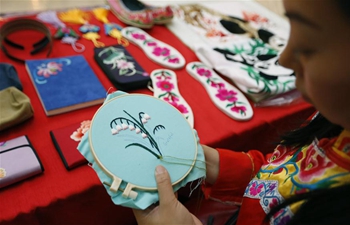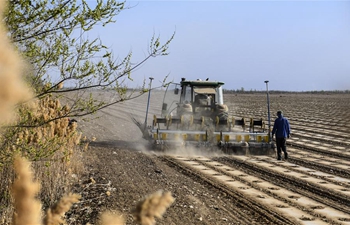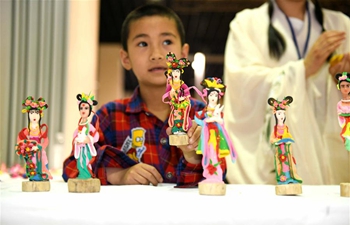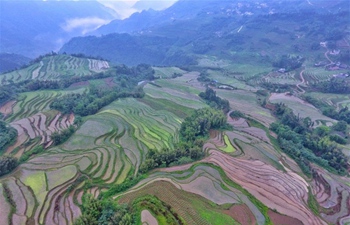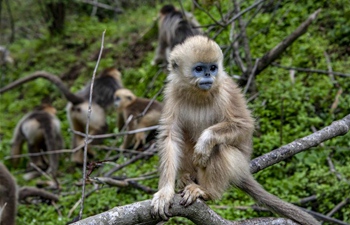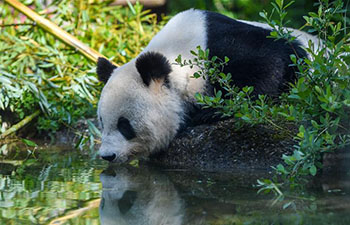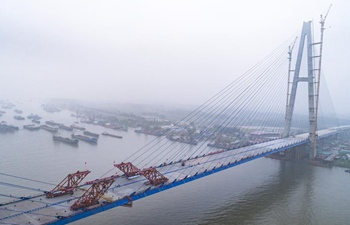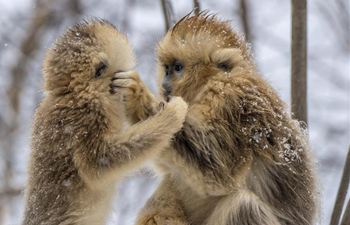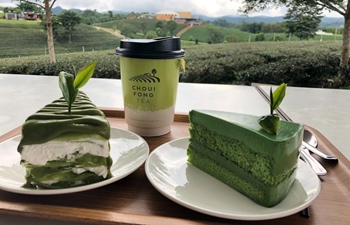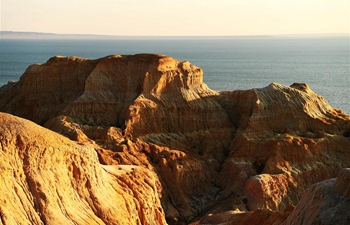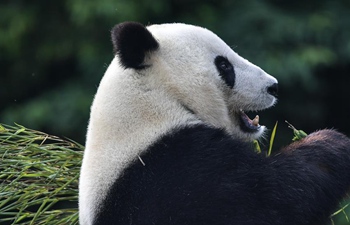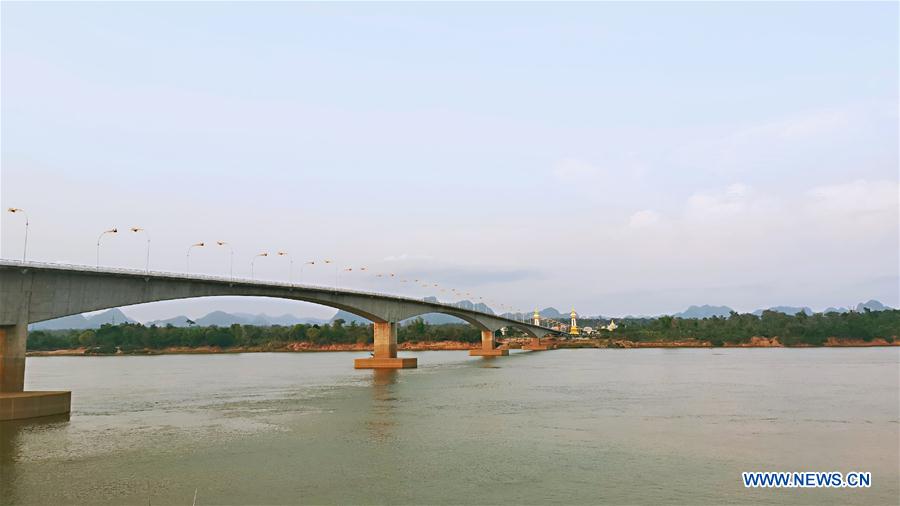 ?
?The Thai-Lao Friendship Bridge over the Mekong River connecting Thailand's Nakhon Phanom Province with Laos' Khammouane Province is seen in Nakhon Phanom, Thailand, May 9, 2019. Narongchai, a volunteer tour boat guide on the Mekong River in northeast Thailand's Nakhon Phanom, has been doing this job for 16 years. "The Mekong is our mother river, binding everyone in the basin," said Narongchai, describing the cross-border river part of his life. TO GO WITH Feature: Mekong river binds regional countries, peoples together as lifeblood of Southeast Asia (Xinhua/Guo Xinhui)
by Guo Xinhui
NAKHON PHANOM, Thailand, May 19 (Xinhua) -- Narongchai, a volunteer tour boat guide on the Mekong river in northeast Thailand's Nakhon Phanom, has been doing this job for 16 years.
"The Mekong is our mother river, binding everyone in the basin," said Narongchai, describing the cross-border river part of his life.
"The water from the sky separated the land into two sides, but the friendship between the two sides will last forever," said Narongchai, 58, who loves singing a famous Mekong river song on the boat.
Nakhon Phanom, a rarely explored but charming place, hugs the Mekong river in the northeast of Thailand with the bordering country of Laos seen from the riverbanks.
Here the Mekong river forms the natural boundary between the two countries.
Narongchai grew up near the bank of Mekong. When he was young, his family grew vegetables on the bank and went fishing in the river.
But in his memory, the Mekong river was an important place for children to play.
"In February, March and April, the beach would come out of the water. We would play in the river and pick up shellfish," said Narongchai.
He said the Thais and Laotians who share the Mekong river have had similar cultural traditions and maintained close exchanges.
According to Narongchai, fishermen on the riverbanks can have a short stay at the opposite shore without a passport or visa.
He said the fishermen, no matter from the Thai side or the Lao side, all knew him, as he has been working on the river for so many years. They greet each other warmly every day when the boat passes.
The Mekong is the most important trans-boundary river in Southeast Asia.
From China's Qinghai-Tibet Plateau, the river, the Chinese stretch of which is called the Lancang river, runs through southwest China's Yunnan Province, Myanmar, Laos, Thailand, Cambodia and Vietnam.
As the lifeblood of Southeast Asia, the Mekong not only carves the natural landscapes along its banks, but also shapes the collective civilization memory of the countries along the river.
"Located on the international business route, Southeast Asia became a melting pot of cultures," said Sunait Chutintaranond, a history professor from Chulalongkorn University in Bangkok.
"Southeast Asia was mainly influenced by two great civilizations," the professor said. "One is the Indian civilization in the South Asian subcontinent; the other is the Chinese civilization from the upper reach of the Mekong river in East Asia."
Dragon boat racing, which originated in China, has also spread to the middle and lower reaches of Mekong.
"The river is also a place of festivals," Narongchai said. "Every year, there is a dragon boat race on the Mekong river around the time the rainy season ends."
Also in April during the Thai and Lao New Year, people celebrate along the river by building sand towers in the shape of Buddhist stupas.
"The Mekong river ties people who live along its banks together, no matter they are Thais or Laotians," Narongchai told Xinhua.

